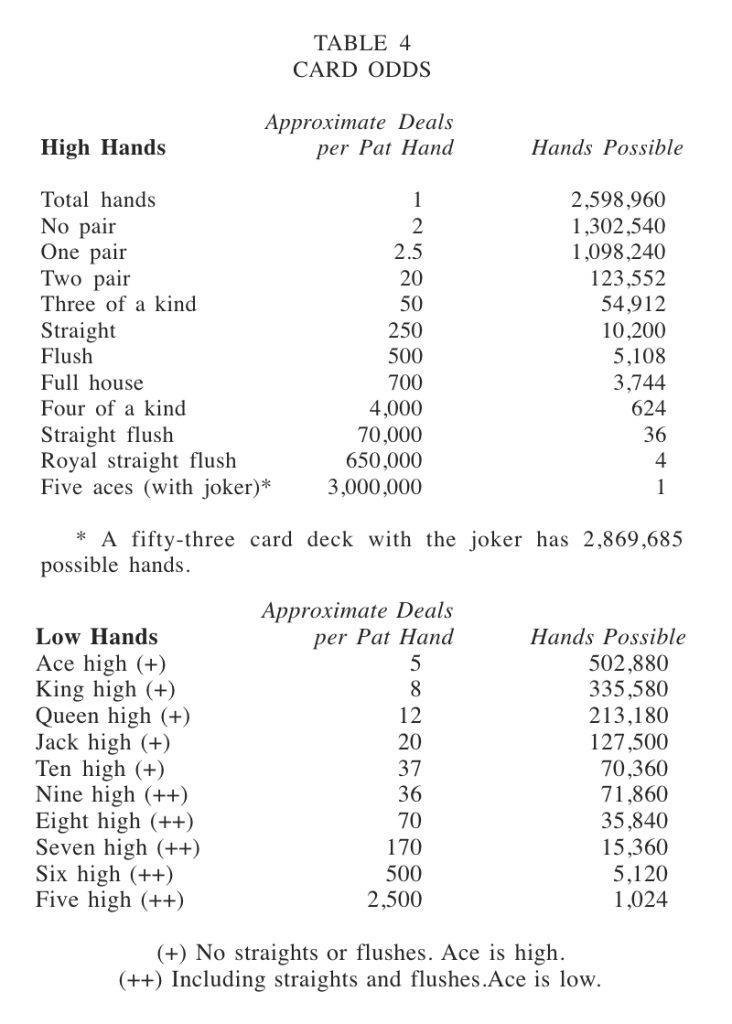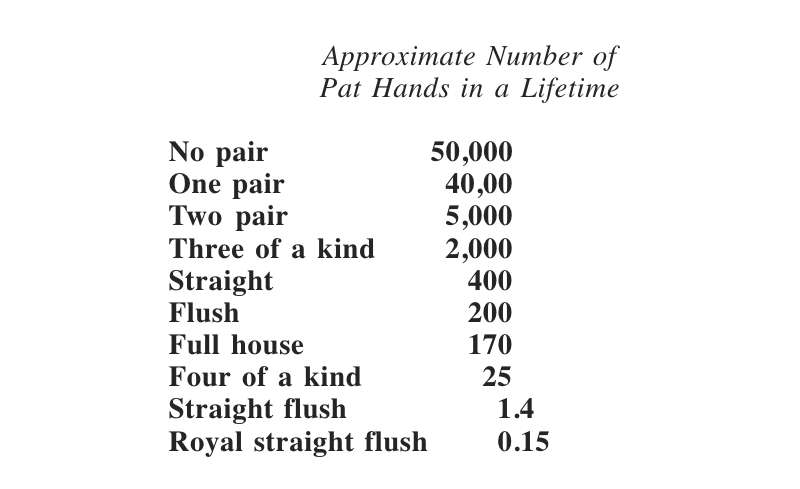Card Odds
1. Card Odds
The card odds are the probabilities of being dealt or drawing to various hands. These odds are reviewed in most books about poker. Table 4 is based on the card odds and shows the statistical frequency with which different poker hands occur.

There are 2,598,960 different poker hands in a fifty-two-card deck. If a player is dealt 100,000 hands in his lifetime, he will never hold (on his first five cards) more than 4 percent of all the possible hands.
Other poker probabilities based on the card odds are tabulated in Appendix D.
The card odds can reveal interesting information. For example. how many pat straight flushes will Sid Bennett get during his lifetime? To determine that number, the expected number of hands that will be dealt to him during his life is estimated by the following calculation:
10 hands/hr.x5 hrs./gamex50 games/yr.
x40 yrs./poker life=100,000 hands/poker life
From this estimation, the number of pat (on the first five cards) poker hands that Sid should get during his lifetime is calculated from the card odds and tabulated below:

So statistically, Sid should get a pat straight flush on his first five cards once or twice during his life. He will, of course, catch straight flushes more frequently on the draw and in seven-card stud.
…Sid wins a big pot with a full house. He throws back his massive head and shouts, “I’m on a spinner! I’m going to break this game!” His head drops; he shakes his finger at the players and continues, “Just watch my luck. I’m getting a whole round of pat flushes… starting next deal.”
“That won’t happen till the sun burns out,” Quintin Merck snorts.
Statistically, Quintin is right. Sid will be dealt five consecutive straight flushes once in every 1.7×1024 deals, or once in every 700,000,000,000,000,000,000 years. Yet his five consecutive straight flushes could start coming with the next deal.
Let him hope, John Finn says to himself.